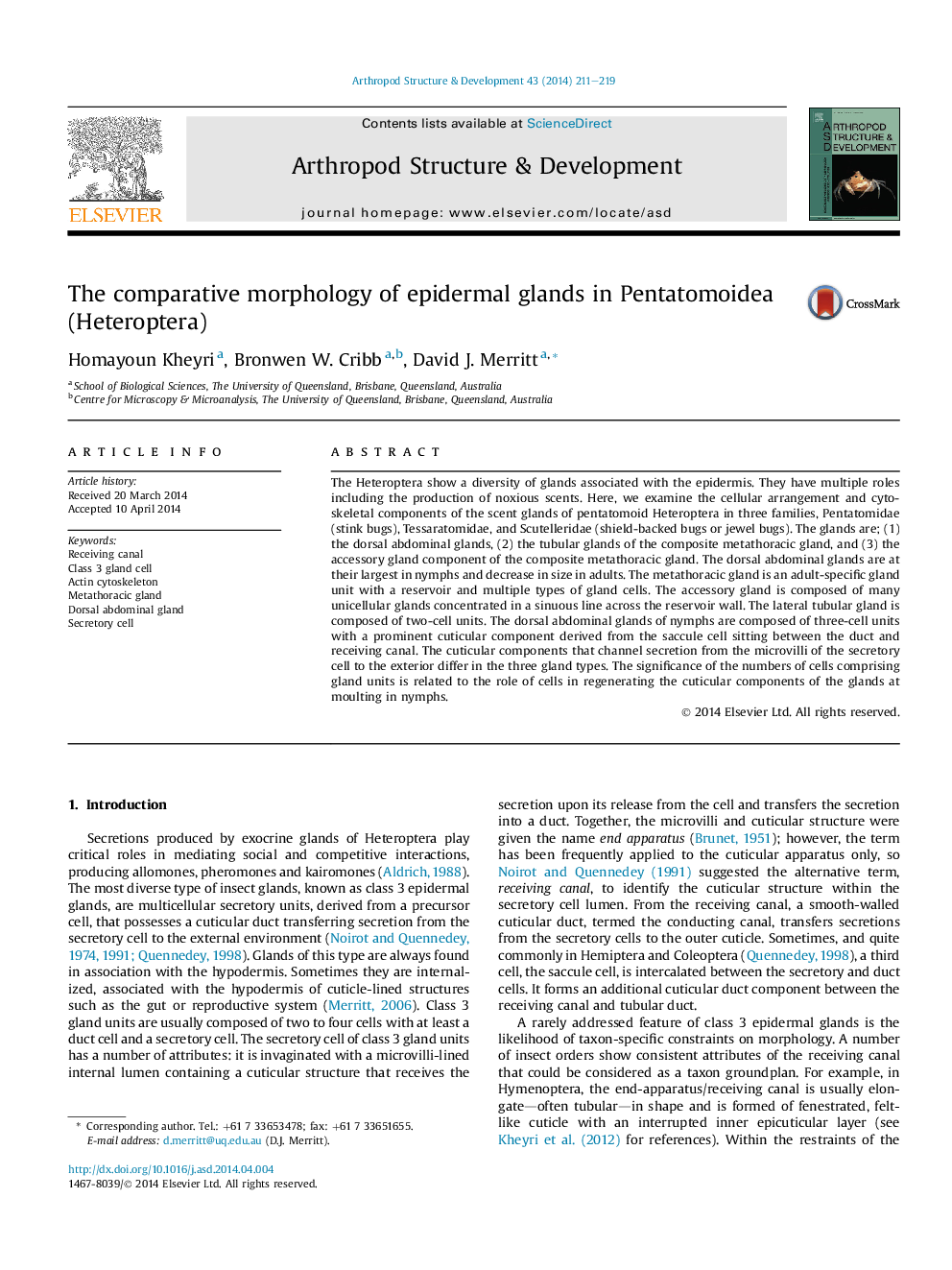| Article ID | Journal | Published Year | Pages | File Type |
|---|---|---|---|---|
| 2778596 | Arthropod Structure & Development | 2014 | 9 Pages |
•A comparison of the class 3 gland units in a range of pentatomoid Heteroptera.•The first comprehensive description of the cuticular components of the accessory gland on the metathoracic gland reservoir.•Actin plays a role in the formation of cuticular structures and forms a cytoskeleton around the receiving canal.•The numbers of cells comprising gland units differs between gland types.•Single-celled gland units might be considered as class 3 glands due to cell death after gland formation.
The Heteroptera show a diversity of glands associated with the epidermis. They have multiple roles including the production of noxious scents. Here, we examine the cellular arrangement and cytoskeletal components of the scent glands of pentatomoid Heteroptera in three families, Pentatomidae (stink bugs), Tessaratomidae, and Scutelleridae (shield-backed bugs or jewel bugs). The glands are; (1) the dorsal abdominal glands, (2) the tubular glands of the composite metathoracic gland, and (3) the accessory gland component of the composite metathoracic gland. The dorsal abdominal glands are at their largest in nymphs and decrease in size in adults. The metathoracic gland is an adult-specific gland unit with a reservoir and multiple types of gland cells. The accessory gland is composed of many unicellular glands concentrated in a sinuous line across the reservoir wall. The lateral tubular gland is composed of two-cell units. The dorsal abdominal glands of nymphs are composed of three-cell units with a prominent cuticular component derived from the saccule cell sitting between the duct and receiving canal. The cuticular components that channel secretion from the microvilli of the secretory cell to the exterior differ in the three gland types. The significance of the numbers of cells comprising gland units is related to the role of cells in regenerating the cuticular components of the glands at moulting in nymphs.
Graphical abstractFigure optionsDownload full-size imageDownload as PowerPoint slide
